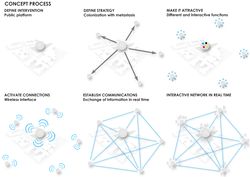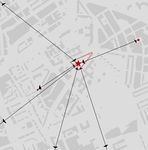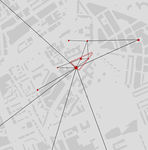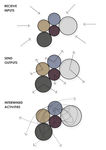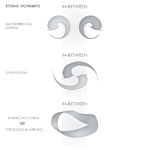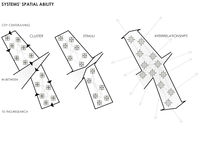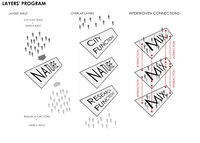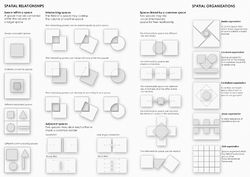atom06:Concept
- Summary of theory
- Actor-Network: Social Network Analysis: Microevent/Microenvironment
Actor-network theory (ANT), is a sociological theory developed by Bruno Latour, Michel Callon and John Law. Here the network contains not only people, but also objects and organizations. This network with many dissimilar elements combines both social and technical parts.
Intervention
Our idea is to create a network that connects in real-time our site with the rest of Delft. From the center of this network, like in metastasis, things spread from the center to non-adjacent parts; contaminating all the city. Metastasis means "displacement" in Greek, from μετά, meta, "next", and στάσις, stasis, "placement".
In practise, our project is divided in two main parts. The center, that is a main public platform that attracts people from different user groups to our site (which is the center between the TU and the city center) where they can interact and communicate; and the metastasis, that are urban located interactive stations that relate back to the center and reverse.
These Metastasis locations for the 'interactive objects' are based on business in the city.
the 'interactive objects' can be installations through which information is sent and received. Where people can have an active part where they are not located. This way the TU and the city are bonded even closer. Especially if the content relates and varies. The 'newness' can wear off, but because of the HYPERstate they are always in, it's never the same...
Actor <--> Network
According to the actor-network theory, we are now defining the network formed by actors, with their attributes. Then we are looking into how it is possible to redistribute the action of the network towards our site, that is the park.
As part of the Actor-Network-Theory, people like objects are equal parts of the same network, as long as they are connected. For this connection these interfaces are the key.
A large factor in the provided program will be a change of pace from week to weekend/summer when there are no students on the center platform.
How this directly relates to the (program of the) site is of course yet to be determined, but the connection points are direct input into the site, be it delayed as prioritized.
The nature of this network is to create a whole. A Borg-like connectivity network with input and output, all on the same network.
What this will look like INSIDE the structure, THROUGH the structure, or however it evolves, is yet to be seen. Site / building layout, program, materialization, user groups and their activities will determine the looks of this network, yet also the network will be able to alter the program, user group ratios or even building layout. Be it one flat building, or many slim towers... The object is to facilitate the integral interactive network: the people, objects and their activities... whether that is nothing or a lot.
Work in Progress
To define the strategy we are doing analysis on different topics: map the activities of users to understand what can stimulate interaction and communication; investigate the possible system's spatial ability; analyze the flow of people to determine the attractors place in which to place the metastases.
Analyze spatial ability
The diagrams relate to relationships and organizations of space according to F.D.K. Ching
Before actually deciding on who is going where with what purpose, these diagrams show the possibilities of any interaction. With this information we can look at the needs and demands of the various actors in our area. From this we can extrapolate a fitting brief, which we can mold within the possibilities of interaction via the relationships and organizations of the space. The (Inter)action of systems will be the key of our project.
The concept of these diagrams is to form an idea of organizing our users and their uses
Spatial relationships
- space within a space
- interlocking spaces
- adjacent spaces
- space linked by a common space
Spatial organizations
- radial organizations
- clustered organizations
- centered organizations
- linear organizations
- grid organizations
